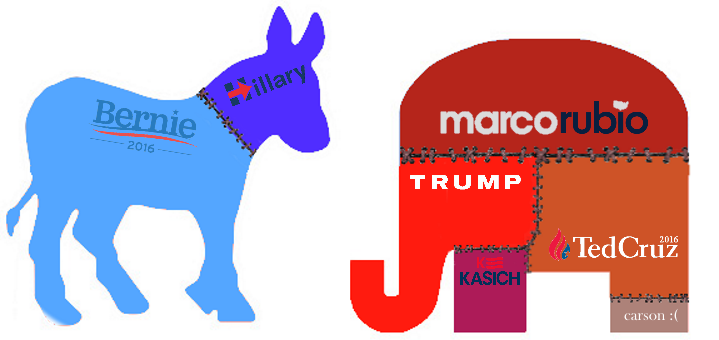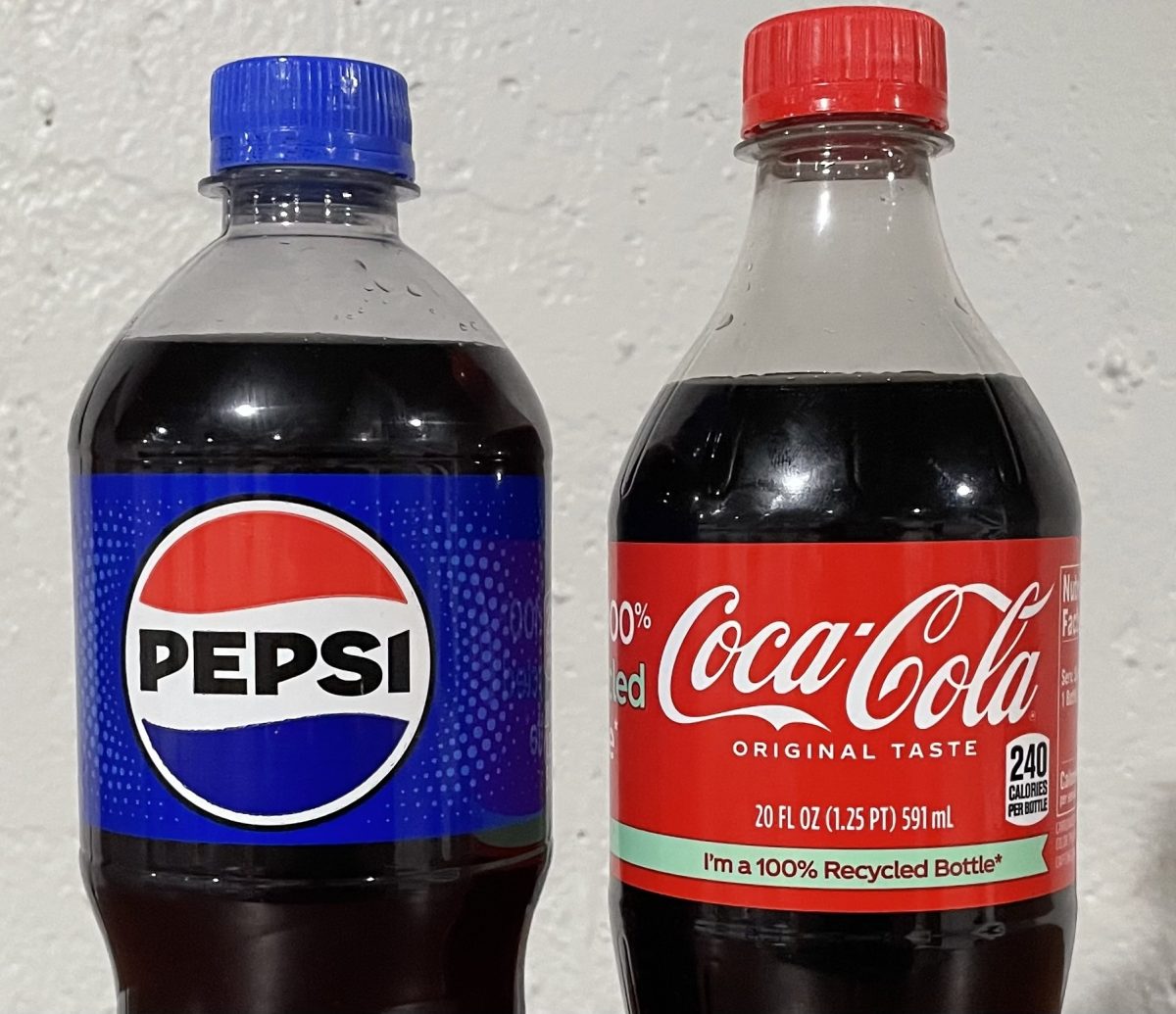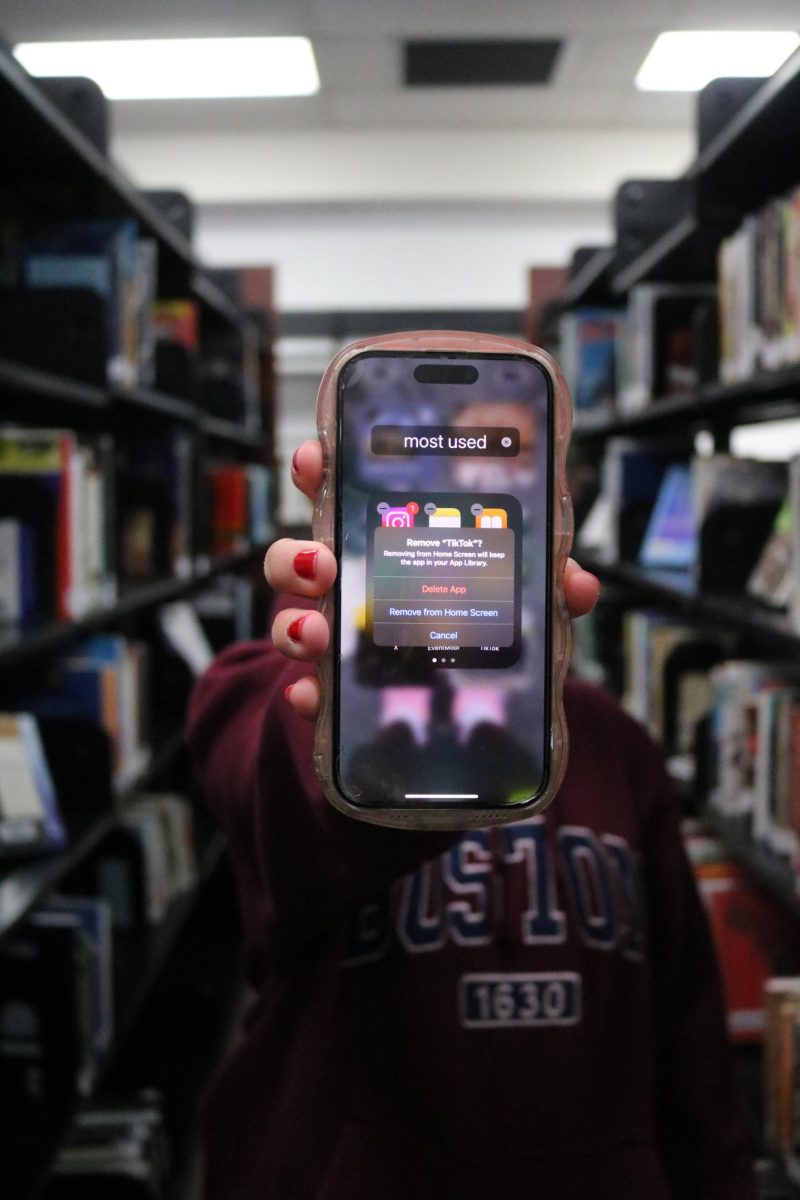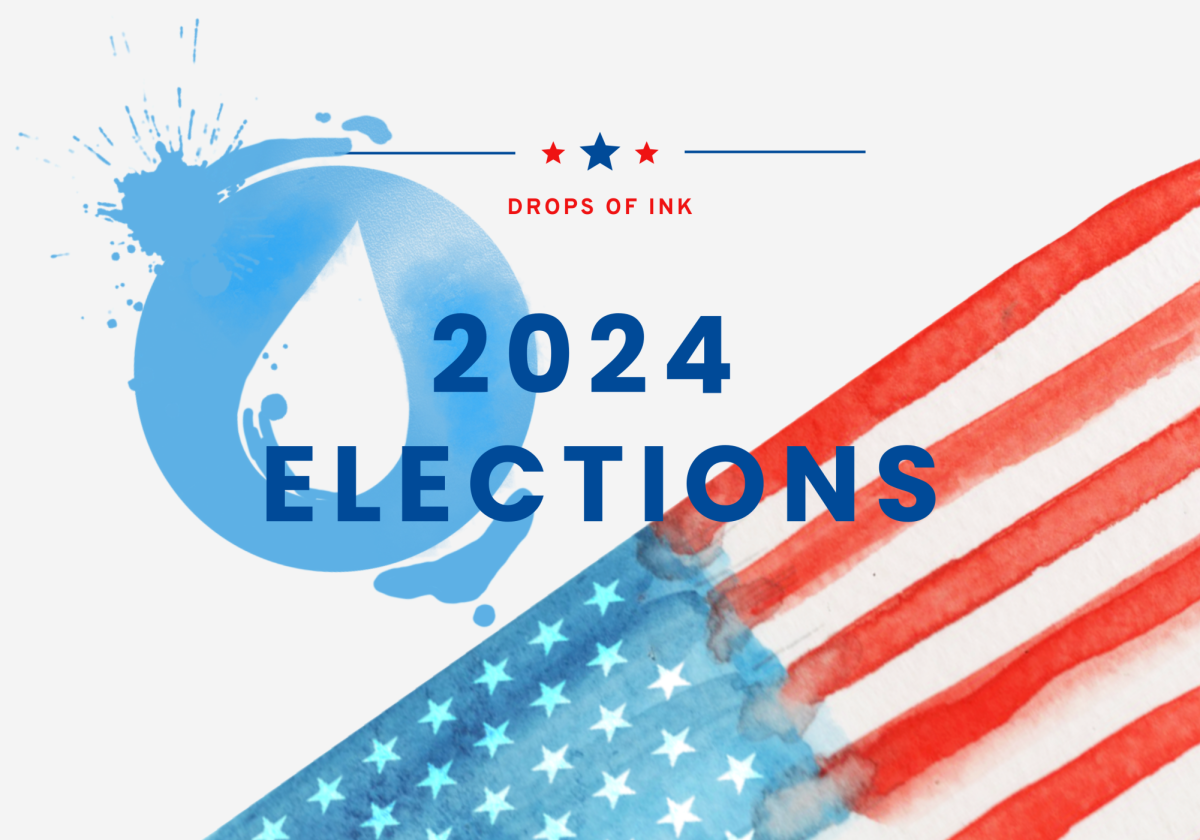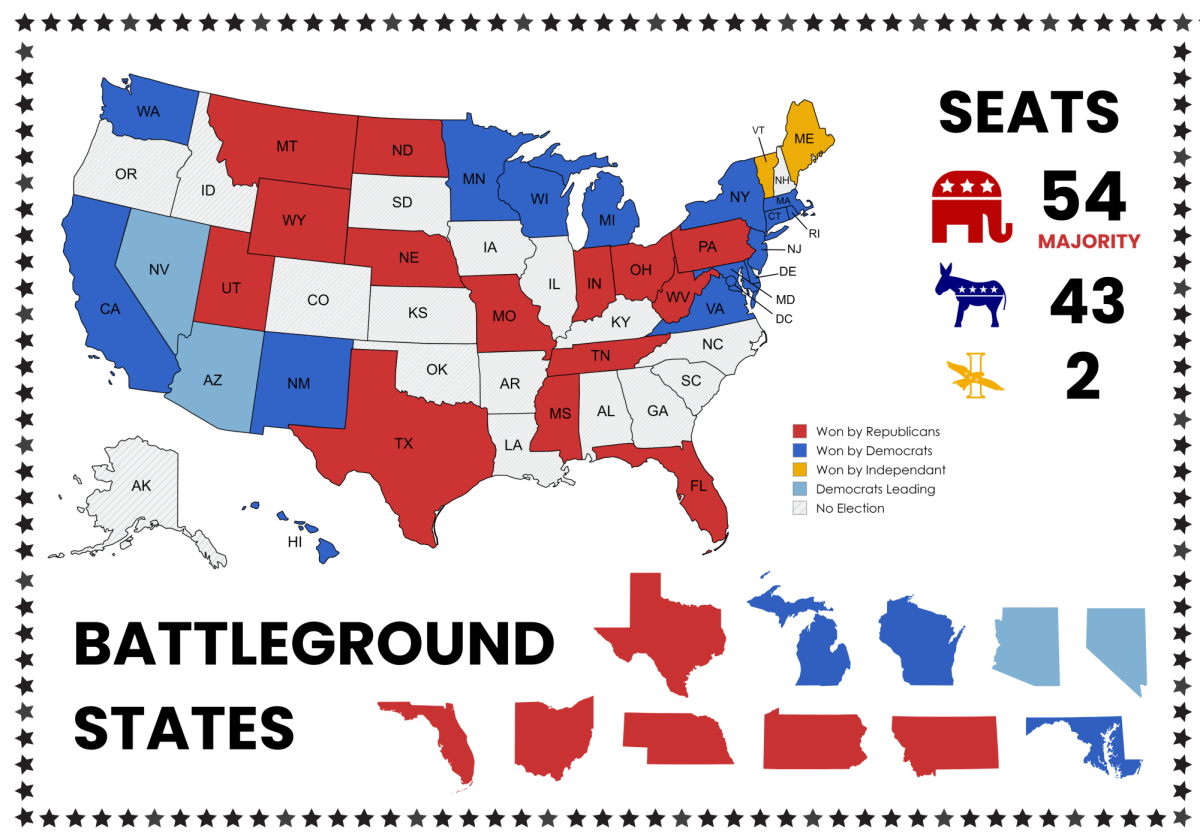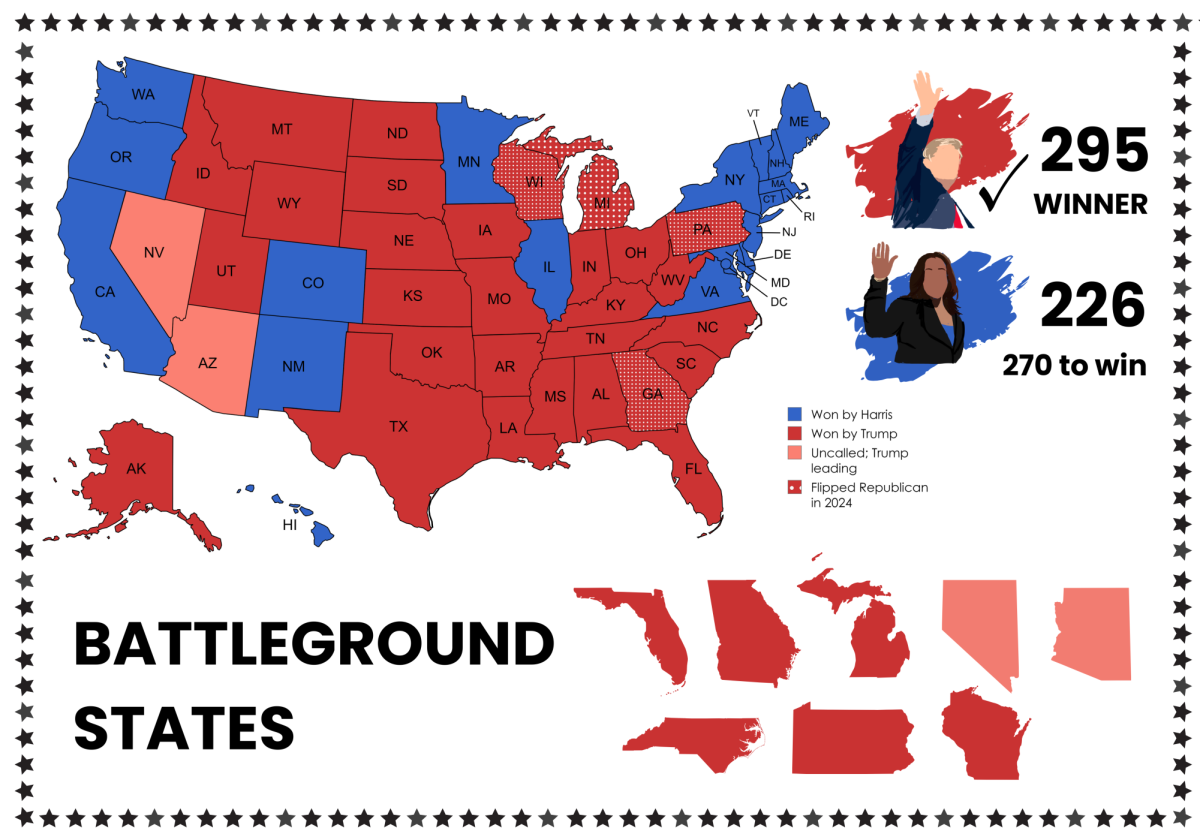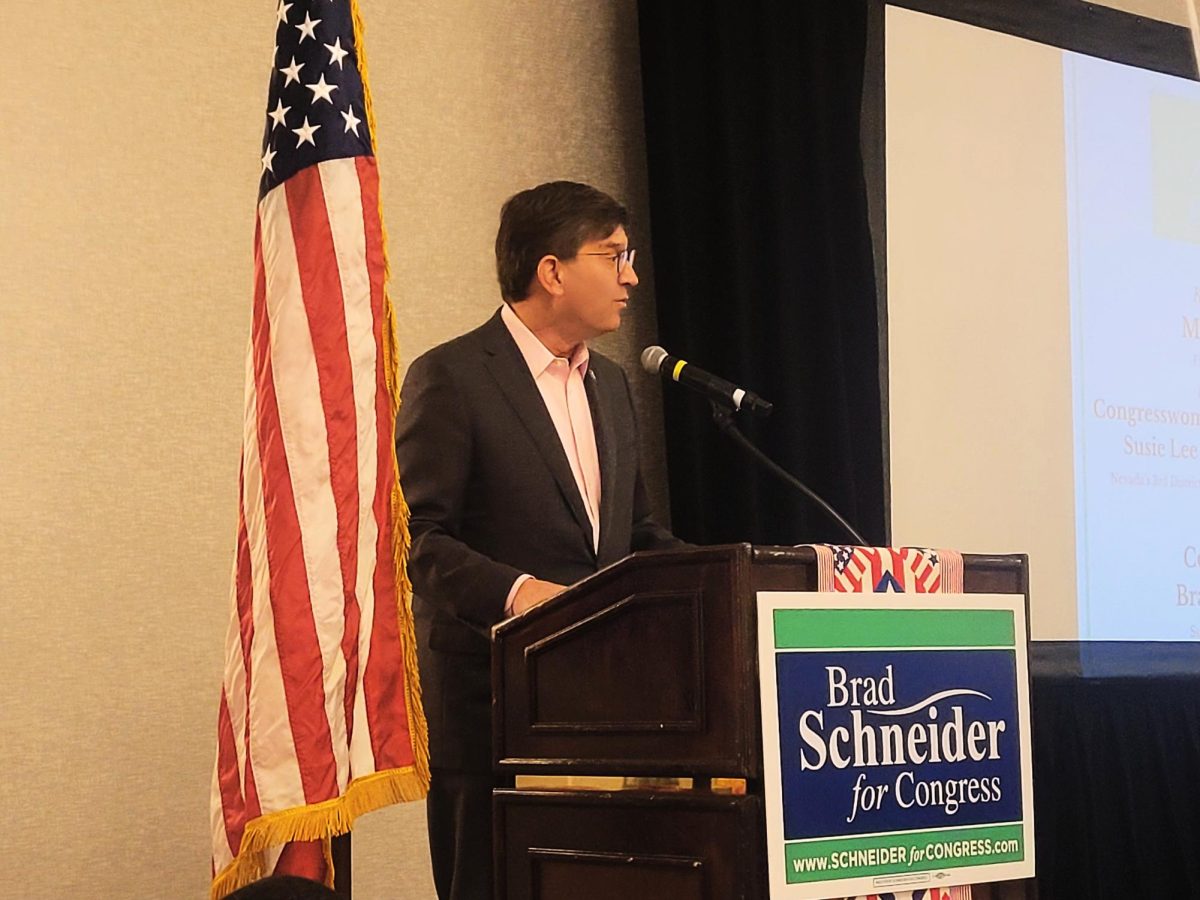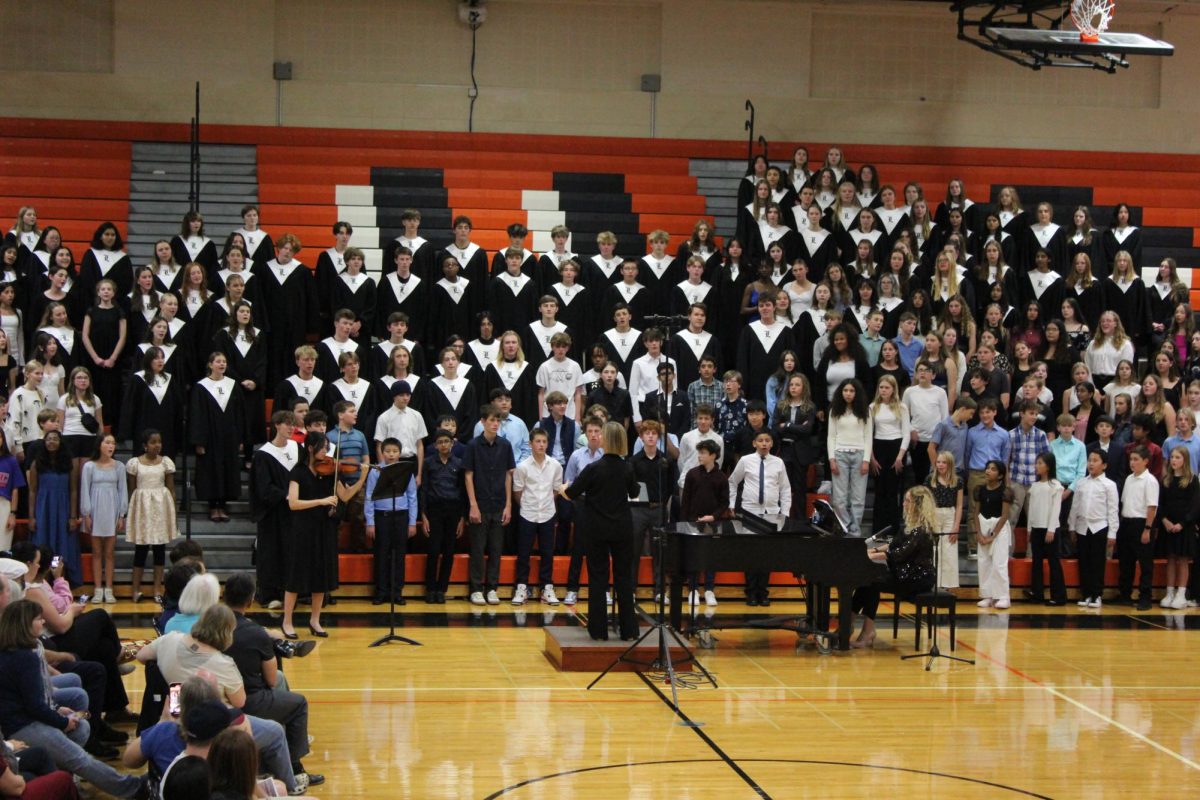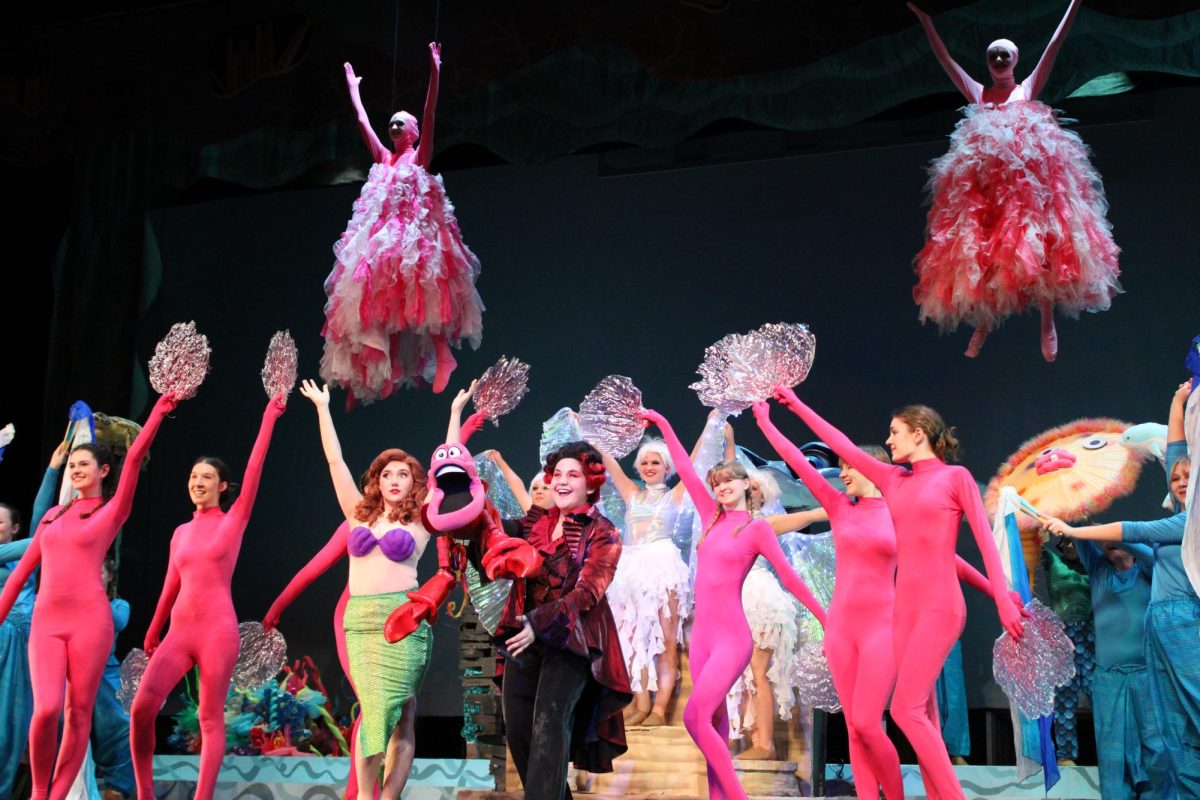On March 2, a survey was sent out to all LHS students via their school emails. Those who took the survey were given the option of choosing one candidate from the current Democrat or Republican presidential primary race. Of the 360 students who responded, a plurality of 38 percent chose Democrat Bernie Sanders as the candidate they would vote for in the Illinois primary.
The survey was available for three days. It was intended to mimic the presidential primary in Illinois, which took place on March 15. The actual Illinois primary is considered “open,” meaning you don’t have to register with a party beforehand, but voters must choose either a Democrat or Republican ballot beforehand. In the DOI poll, this was automatically accounted for.
Sanders had 70 percent of the Democrat vote, whereas former Secretary of State Hillary Clinton held the remaining 30 percent. On the Republican side of the ballot, Florida senator Marco Rubio garnered the most Republican votes at 44 percent, leading the national GOP frontrunner Donald Trump, who placed in second at 34 percent. Ted Cruz of Texas (11 percent) and John Kasich of Ohio (8 percent) came in third and fourth, respectively, and Ben Carson, who has since dropped out of the race, placed in fifth at 3 percent.
The main arguments made in the survey for choosing Sanders were that he is “the most genuine candidate” and that he would help college students pay for their education. Clinton supporters claimed that she was “the most qualified” to run for president (referring to her time as Secretary of State under Obama) and that she would promote women’s rights.
As for Republicans, students chose Trump because of his “success as a businessman” and that he “isn’t a true politician.” Rubio supporters mentioned that he “has the best chance to stop Trump” and that he is the most reasonable of the bunch. Those who chose Cruz mentioned his “strong conservative values” and his commitment to a smaller government. Kasich supporters claimed that he is the most moderate of the candidates and that he’s the most fit to be president and “actually get legislation passed.”
Forty of the 360 people who responded chose not to vote for a nominee, with many claiming that the current crop of candidates is “a joke” and that none of them are deserving of the presidency.
On the national level, Clinton and Trump are both expected to win their party’s nomination. Clinton’s path is a lot clearer; she is highly regarded within the Democratic party and already has won 1,221 (as of March 8) of the 2,383 delegates needed to win the nomination.
Trump, on the other hand, has taken quite the unconventional road. The controversial business mogul is not respected by many of his GOP peers. In fact, Trump himself denounced the Republican establishment as “fraudulent” and “failing” various times on his Twitter account. Nonetheless, Trump continues to lead Republican polls nationwide and has the most GOP delegates at 458 (as of March 8).
Although it hasn’t quite captured the media attention like the Republican party has, the Democratic nominee race has been compelling as of late. The lack of publicity likely has to do with the idea that Clinton’s nomination may be inevitable; she is heavily favored to take home the candidacy.
However, a push has been made by Sanders supporters, who have been vocal about their opinions and make up a majority of young voters, evidenced by the popularity of the Vermont senator at LHS. Unfortunately for them, the reality of the situation is that young Americans often just don’t vote: citizens ages 18-24 years old have the lowest voter turnout among any age group, according to the U.S. Census Bureau.
A showdown between Clinton and Trump (which is the most likely scenario) would feature two polarizing candidates: both have low “undecided” favorability percentages relative to the other potential nominees, according to FiveThirtyEight.
As the party conventions in July approach increasing closer, the nominee races for both Democrats and Republicans should continue to capture the nation’s attention.



